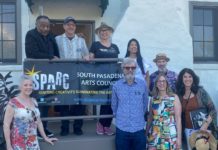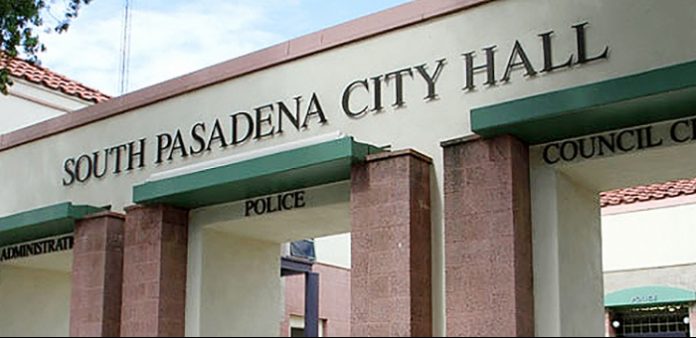
South Pasadena city officials will fight back Wednesday night, claiming incorrect information and misleading statement are contained in the ballot arguments for the “Yes on N” campaign that seeks to repeal the existing utility users tax (UUT) in November.
Measure N on the November 6, ballot will ask voters in South Pasadena to repeal the City’s
Utility Users Tax.
A “yes” vote on Measure N is to eliminate the tax and a “no” vote will retain it.
According to the City of South Pasadena, a repeal of the tax would cut $3.4 million from the city budget and force significant service cuts and layoffs in nearly all departments. Proponents of Measure N recently filed ballot arguments in support of the repeal.
During Wednesday’s 7:30 p.m. City council meeting at City Hall, City Manager Stephanie DeWolfe, will address what she believes is false information and misleading statements appearing in the ballot argument. A report was prepared by the city’s Finance Director, Craig Koehler, and Mariam Lee, the city’s human resources manager.
Among the ballot arguments, UUT proponents claim: “Since 2011, the city’s general fund has grown by $4.4 million, but general fund spending increased by $9.5 million (49 percent) … The City has a spending problem, not a revenue problem.” They go on to state that the main culprit is “unsustainably bloated salaries and benefits.”
The ballot argument further states that the city has not appropriately managed its pension obligations and suggests that the City of South Pasadena should exit CalPERS and switch to a 40I (k) plan as a means of saving money.
In a city staff report, DeWolfe says the statements are incorrect and misleading.
In 2011, pointed out DeWolfe, the City Council made a strategic decision to increase its investments in critical infrastructure such as street repairs. The additional General Fund spending was the direct result of these infrastructure investments, not employee salaries and benefits, which have been and continue to be among the lowest in Southern California.
The City’s general fund, according to the city manager, has indeed seen a cumulative increase of $4.4 million due to an increase of $3 million in property tax revenue, and increases in sales taxes and service fees.
“The City’s spending increased by $9.5 million over the past seven years. The additional expenditures were allocated to critical infrastructure improvements that reflected strong community demand for street repairs and maintenance,” she wrote in the report. “In 2011, the City Council made a commitment to improving, rehabilitating, and replacing its aging infrastructure. At that time, the overall street condition in the City was measured with a very low Pavement Condition Index (PCI) score of 61 (on a 100-point scale). The backlog of street repairs citywide was estimated at $60 million.”
Beginning in fiscal year 2012-13, DeWolfe says annual appropriations for street and sidewalk improvements averaged $2 million a year from General Fund reserves. In total, the City has spent over $11 million to fund street projects out of the City’s General Fund since FY 2012-13.
Employee Salaries and Benefits The city manager claims the city has controlled employee salary and benefit costs in the following ways:
• Employee salaries are below the median salaries of adjacent cities.
• Medical, dental and vision insurance benefits are among the lowest when compared to other public agencies in the region.
• Pension formulas are the lowest permitted by the State retirement system.
• Staffing is conservative with the number of employees per capita significantly lower than
in surrounding cities.
• Employees pay 100% of the employee contribution for the retirement plan.
A recent survey showed that South Pasadena salaries fall below the median salary of adjacent cities. DeWolfe says the median annual salary for all full-time employees is $68,184. She says the City of South Pasadena did not increase wages or provide a Cost of Living Adjustment (COLA) as part of the approved labor contracts for 2018 and 2019.
“Further, a survey conducted in 2017 indicated that South Pasadena employees receive among the lowest total benefits for medical, dental and vision insurance when compared to other public agencies in the region,” wrote DeWolfe in the report. “The City offers the lowest retirement formula permitted by CaIPERS. For classic members, the City offers the lowest of six retirement formulas for miscellaneous employees (2% @ 55) and the lowest of eight retirement formulas for public safety employees (2% @ 50). Over the years, this results in significantly lower financial liabilities for the City when compared to many neighboring cities that offer higher retirement formulas. By comparison, the industry standard is 2.5% for miscellaneous employees and 3% at 50 for public safety employees. Some cities pay as high as 2.7% at 55 for miscellaneous employees.”
The number of employees, noted DeWolfe, also impacts municipal pension costs, adding: “The City’s number of staff per capita is roughly half of that for larger cities such as Pasadena. There were no increases in the number of employees in the adopted budget for FY 18-19, and in the last five years only three full time positions were added, all of which were conversions of existing contract employees to City employees.”
Other key issues on the agenda Wednesday night:
Addressing Homelessness in City
South Pasadena City Council member will address the issue of homelessness in the city.
Over the past few years the population of the homeless has increased and, according to city officials, has become more visible within the community.
The Police Department cannot be exact on the homeless population; however, there is an estimated homeless population to be approximately 15 people.
This number does not include homeless individuals who are transients enjoying City services, passing through the city, or obtaining meals, clothing or other items from local resources.
The City of South Pasadena has participated in the Los Angeles Homeless Services Authority “point-in-time” count for the past three years. The visual, point-in-time count means that officers must visually see the homeless individual to be counted. The number of homeless individuals officers are aware of may not be 100% reflected in the count as some homeless individuals may not be found during the count. The count takes place during a 3 hour period from 8 p.m. through 11 p.m. and is conducted simultaneously throughout the San Gabriel Valley.
The first homeless point-in-time count took place in January 2015 and, according to a city report, at that time there were approximately 15 homeless persons counted by the police department. In January 2016, the count decreased to nine. In January 2017, the count was eight and in January 2018, the count was 9.
In addition to counting the homeless, Holy Family Church has donated cold weather packages along with a laminated homeless resources card for each person who would accept it.
In an effort to address the increase of homeless with mental health issues, South Pasadena along with the Arcadia and the Monrovia Police Department’s teamed up with the Los Angeles County Department of Mental Health to create a specialized response team to assist with people suffering from mental health crises.
The newly formed West San Gabriel Valley Mental Evaluation Team (WSGV MET) provides mental health intervention services 40 hours a week in the three cities it serves. A Los Angeles County Department of Mental Health Clinician averages four shifts per month and is teamed up with a South Pasadena Police Officer to provide homeless
outreach. The Police Department is working with other local agencies including the Pasadena and the Los Angeles Police Department’s to obtain resources and knowledge to work with homeless persons.
In October 2018, members of the South Pasadena Police Department will be trained and begin working with the Los Angeles Sheriffs Department, Los Angeles County Police Chiefs Association, and the Pomona Police Department. The Homeless Outreach Service Team (H.O.S.T.), program is funded through Measure H funds and concentrates on outreach centered on referrals to housing, rehabilitation and support. The mission of the H.O.S.T. program is to address homeless issues with regional partnerships. The police department will be reimbursed for their participation in the program through grant funding.
New Public Art Program
City council members will be asked to adoption a resolution declaring the city as a Creative and Innovative City.
Public art can create dynamic visual experiences for residents and visitors while stimulating the economy. Staff recommends a comprehensive Public Art Program that includes a resolution declaring the City of South Pasadena as a Creative and Innovative City, an ordinance establishing a public art development fee to fund the creation of public art; and an ordinance creating a Public Art Commission to help review proposed public art projects.
While beautifying the city, the Public Art Program will assist the City in its Strategic Goal to promote appropriate local economic growth, and enhance the quality of life in the city.
The Public Art Program will help the City create an environment that will attract and retain individuals from the creative arts and innovation sectors to contribute to the vitality and prosperity of the City. Establishing a Creative and Innovative City Resolution will further demonstrate the City’s commitment to support a creative and innovative environment.
Through the development of the Public Art Development Fee, the City can contribute to the visual enhancement of the built environment by requiring the following developments to provide one percent (I %) of the total building valuation towards public art on-site or one and a half percent (1.5%) of the total building valuation to the public art development fee in lieu of providing public art on-site:
• Residential developments of four or more units with a building valuation exceeding
$500,000 as determined by the Building Official; and
• Commercial and industrial building projects with a building valuation exceeding
$500,000 as determined by the Building Official; and
• Remodeling projects of existing commercial or industrial buildings, when the remodeling
has a building valuation exceeding $250,000 as determined by the Building Official; and
• Remodeling projects of residential buildings or complexes of four or more units, whether
exterior or interior, when the remodeling has a building valuation exceeding $250,000 as
determined by the Building Official.
Council members will tackle the issue Wednesday night.
Strategic Plan Update The Strategic Plan identifies priorities and a focus on issues that are important to improving the quality of life in South Pasadena. The plan contains citywide objectives and strategic initiatives needed to support the Strategic Goals. Although the goals of the Strategic Plan are intended to be long-term, the strategies expressed in the objectives and initiatives are intended to be accomplished within FY 2018-19. Many of the Strategic Plan initiatives are underway and have been included in this year’s Budget.
Councilmembers will receive a first quarter update on fiscal year 2018-19 on Wednesday night.
The purpose of quarterly reports is to update the City Council on the status of those initiatives that are key to achievement of the strategic goals and objectives set out in the City’s Strategic Plan. The first quarter report provides updates from July through September 2018. City officials say the reports are not intended to be a complete description of the work performed by City staff during the quarter.
City staff is also engaged in delivering core services and participating in other significant initiatives. Two objectives were scheduled to be completed by the end of the first quarter of the fiscal year:
• Prepare financial impact statement outlining the cuts that would be necessary if the
Utility Users Tax is repealed: fiscal impact report was completed and adopted by Council
on September 19.
• Apply for Measure H funding to strengthen homelessness programs and partnerships:
The City is waiting for the release of grant applications for Measure H funds for
Homelessness programs. In the meantime, a homelessness taskforce of department
leaders has been meeting to identify funding priorities and coordinate services and response.
Asked to Oppose Proposition 6
The City Council will be asked to adopt a resolution to oppose Proposition 6, the ballot measure to repeal Senate Bill 1.
Proposition 6 would repeal SB I, the Road Repair and Accountability Act, which represents the most significant effort to fund local road and bridge repairs in years. SB I was enacted by the legislature and approved by the Governor in April 2017. It provides the first significant, stable, and on-going increase in state transportation funding in more than two decades. Proposition 6 would eliminate more than $5 billion annually in existing transportation funds and stops funding for more than 6,500 bridge and road safety, transportation and public transit improvement projects currently underway throughout California.
The City of South Pasadena anticipates receiving $431,000 in SB I funds in fiscal-year 2018-19. The funds from SB I increase the amount of money dedicated to improving transportation infrastructure in South Pasadena, including the annual preventative maintenance program and city street rehabilitation projects.
If Proposition 6 is approved, city officials say California cities and counties will lose millions of dollars annually, which support local streets and roads rehabilitation. In the San Gabriel Valley alone, 101 city projects have or will be receiving SB I funding. These local projects range from new traffic signals, to phasing projects, to parkway improvements, to intersection safety enhancements, to restriping, to curb ramp upgrades, to large-scale repaving and reconstruction of roads. If Proposition 6 is passed by the voters, these projects could experience a full halt, elongated timelines, or labor shortages. These uncertainties would have a direct effect on traffic and the transportation infrastructure. Moreover, SB I also funds California Active Transportation Program (ATP) projects to improve or build new infrastructure and safety features for bicyclists and pedestrians, including greenway features.
Capital Improvement Plan
It is recommended that the City Council receive and file the Capital Improvement Plan (CIP) Update. The City Council approved a five-year CIP on June 6, 2018. The total CIP appropriation for 2018-19 fiscal year is $14.2 million for various improvements consisting of municipal buildings and facilities, streets and streetscapes, sewer and water, and information technologies.
Walk or Bike to School
A proclamation will be made declaring October 10 as Walk or Bike to School Day in South Pasadena.
Student, joining their parents, are encouraged to ride their bike or walk to school on this day.
“Walk or Bike to School Day” focuses on the benefits of walking or hiking rather than driving to school, creating a cleaner, safer, and environmentally healthier choice for children. The day affords parents the opportunity to spend more time with their children, reduces car use, traffic hazards, and is environmentally-friendly.
New Youth Commissioner
Amanda Estivez will be appointed to the Youth Commission. She will serve a two-year school term from October 3,2018 until June 30, 2020.
Establish 710 Ad Hoc Committee
City Council members will consider establishing an Ad Hoc Committee for the California Department of Transportation State Route 710 Surplus Property Sales. The ad hoc committee will work with City staff to address issues and concerns associated with the California Department of Transportation (Caltrans) State Route 710 (SR-710) surplus property sales.
On September 19, 2018, the City Council received numerous public comments regarding issues and concerns regarding the sale of SR-710 surplus properties and requested that consideration of an ad hoc committee be placed on the next agenda. An ad hoc committee will be able to work with Staff to analyze concerns and develop strategies to provide support to residents in their quest for homeownership.
Next Steps
• Staff will conduct a meeting with the ad hoc committee to evaluate the public comments
and develop appropriate strategies to address resident concerns.
• Staff will work with Caltrans and State legislators to address resident concerns and
facilitate discussions.
In 2014, Caltrans released the Notice of Proposed Rulemaking regarding the proposed
regulations for the Affordable Sales Program. The proposed regulations implement Senate Bill 86 (Roberti Act) and governs the sale of surplus properties along the SR-710 corridor, including the 99 properties located in the City of South Pasadena (City). The Affordable
Sales Program
outlines the following purchasing priorities:
• Current tenant, who is the former owner
• Current occupant of low or moderate income
• Current occupant at not more than 150 percent of the area median income.
• Public or private Housing Related Entities (HREs).
• Current tenant.
• Former tenant in good standing, in reverse order of tenancy.
• Public auction
Information provided by The City Of South Pasadena


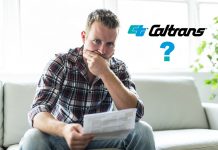



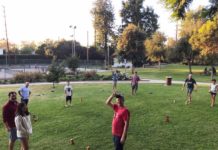
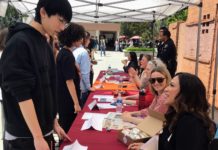







.png)








